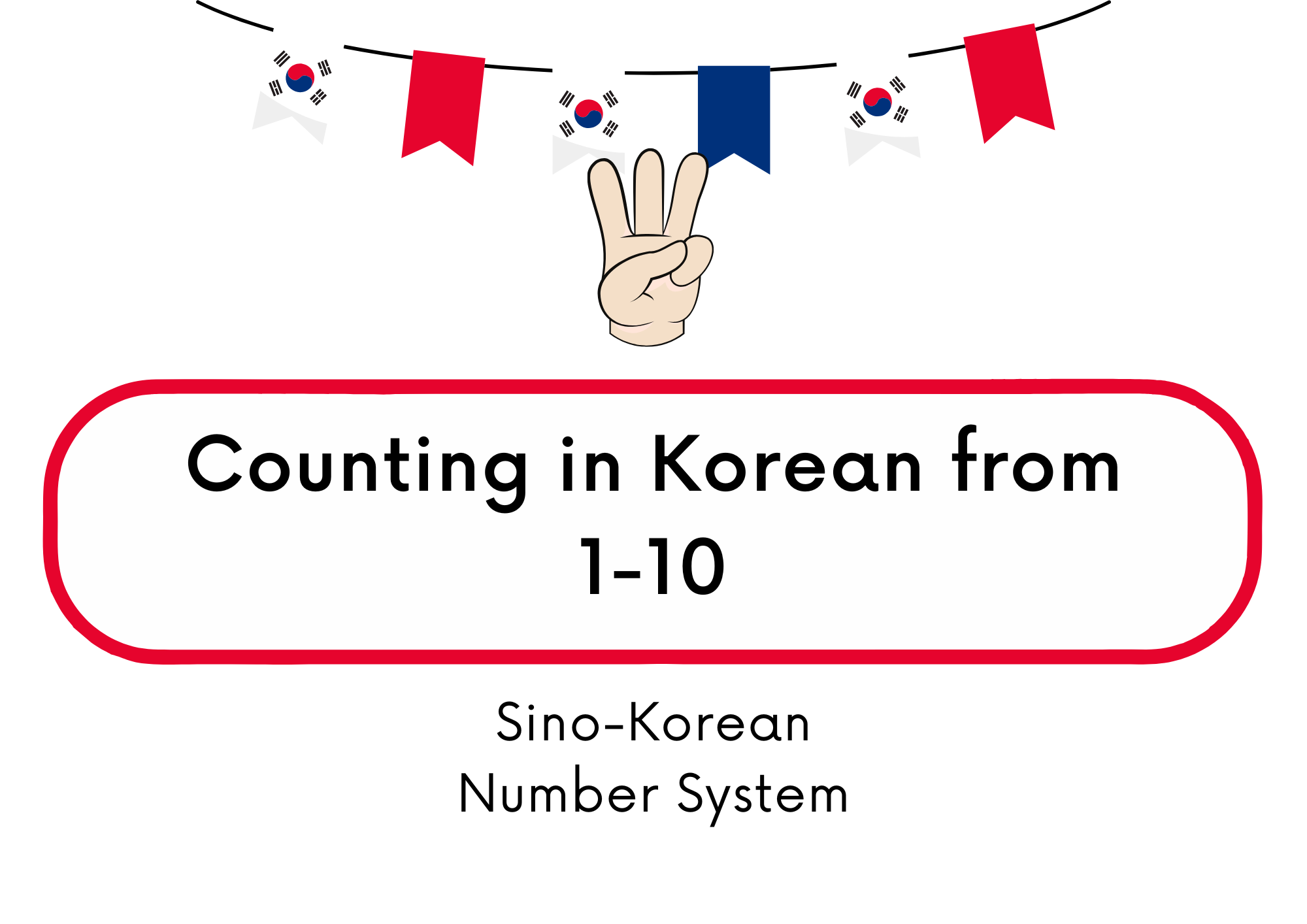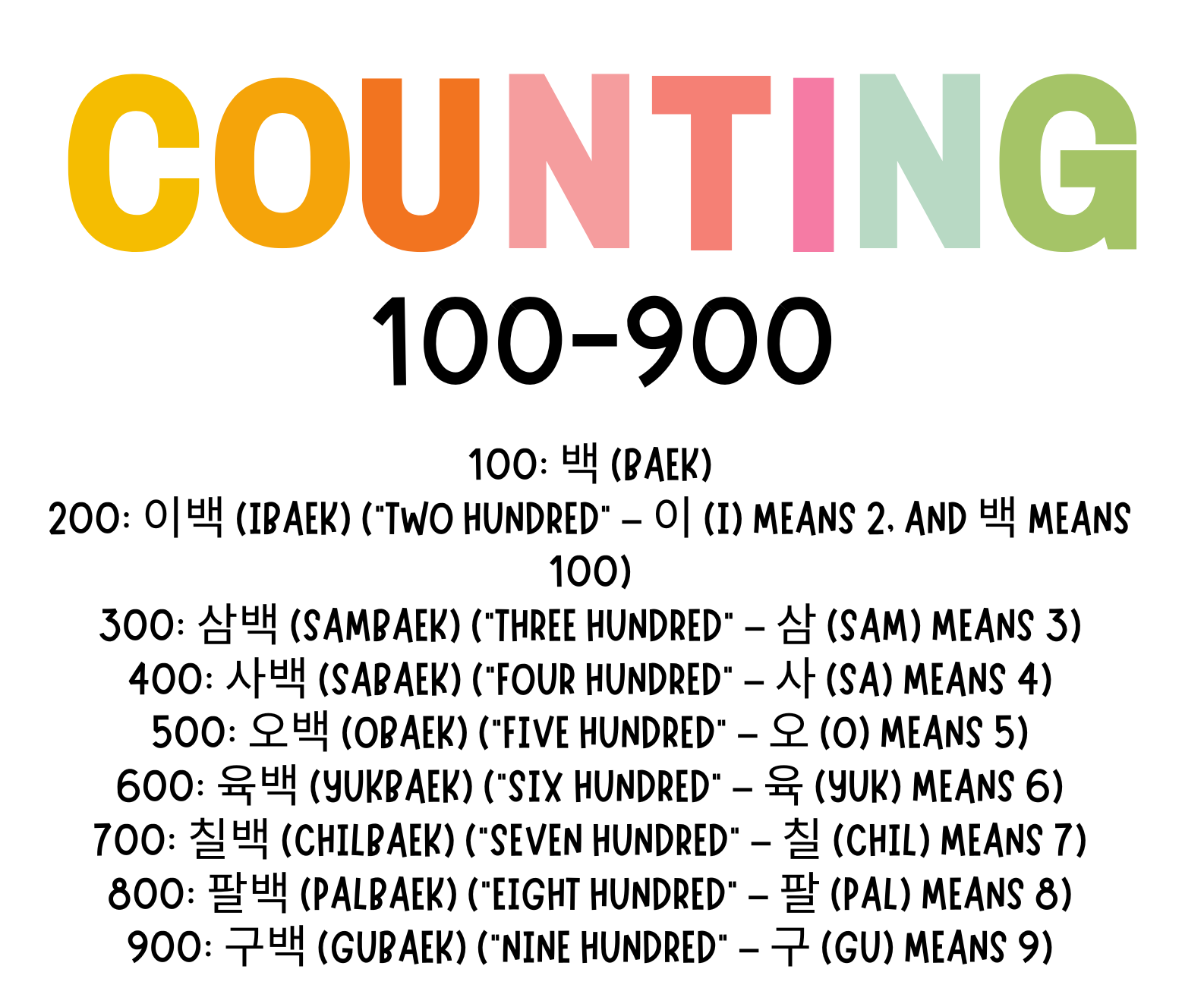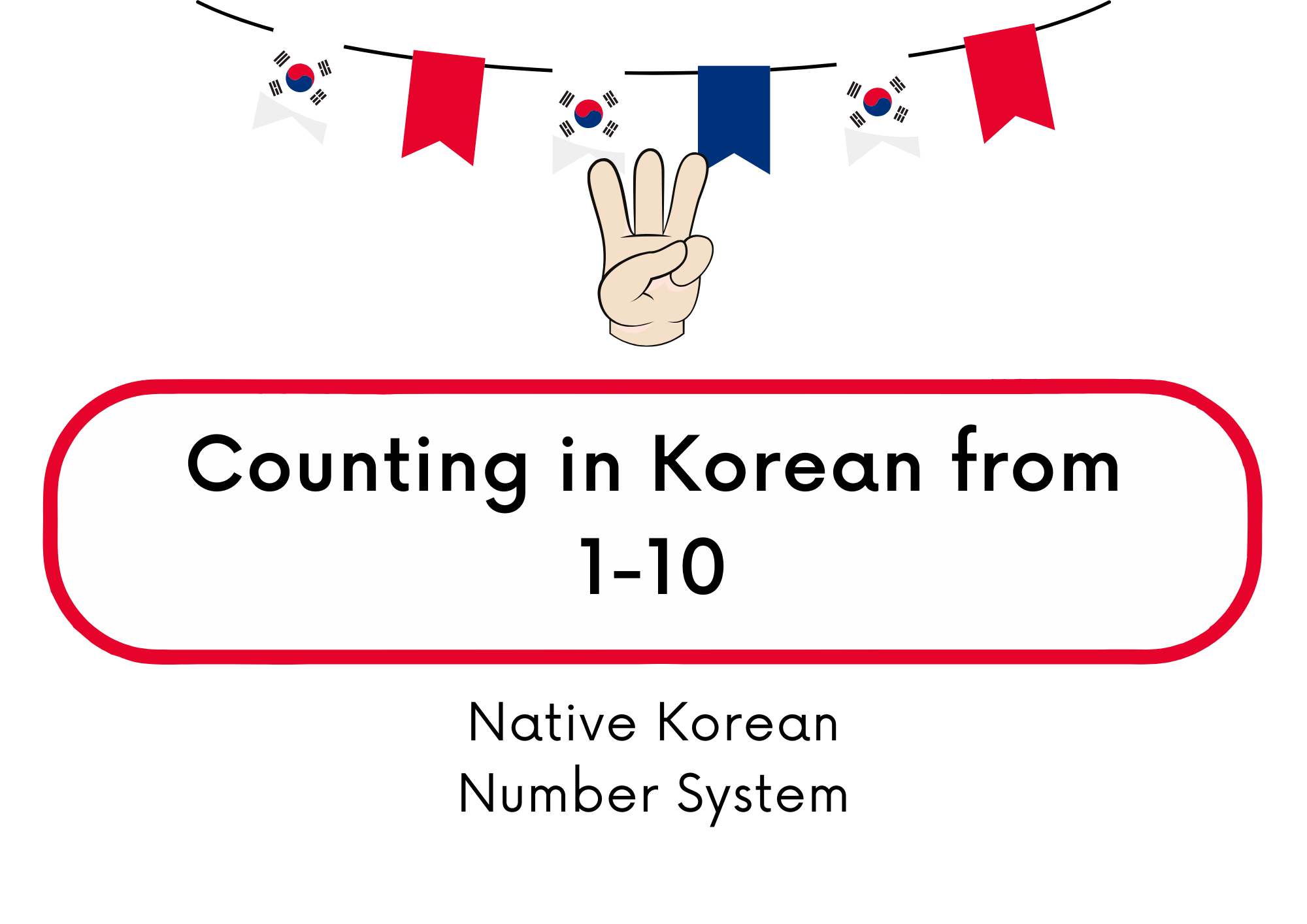The Sino-Korean number system is crucial for daily life and complex dealings in South Korea. Understanding how to count from 1 to 1000 is interesting because it shows how these numbers fit into Korean culture, economy, and science. This knowledge isn’t just practical; it also deepens our appreciation of Korean life. Let’s think about how knowing these numbers can help us in everyday situations and open up opportunities for cultural and professional growth. What doors might open if you knew these numbers well?
The Korean Number Systems
The Sino-Korean System
The Sino-Korean system comes from Chinese numerals. It’s widely used in Korea for dates, money, measurements, and math. This system includes numbers from zero to ten and higher numbers like hundred and thousand. These numbers combine to make larger ones. For example, 21 is ‘이십일’ (eesip-il), which puts together 20 (‘이십’) and 1 (‘일’). You’ll see it a lot in financial deals, scientific settings, and when counting things formally. Knowing this number system is key if you want to get by in South Korea, whether you’re shopping or reading official papers.
The Native Korean System
The Native Korean numeral system is used every day in Korea. It helps with counting things like how old someone is or how many items there are. This system goes from one to ninety-nine and is mostly used in casual settings.
For example, you might use it when you’re talking about someone’s age or counting things out loud. The numbers start with 하나 (hana, one), 둘 (dul, two), 셋 (set, three), and so on. If you’re getting to know the Korean language, it’s really helpful to understand this system. It shows you more about how people use numbers in their daily lives in Korea.
Counting in Sino-Korean from 1 to 1000
Numbers 1-10

Knowing the first ten Sino-Korean numbers is key to understanding bigger numbers up to 1000. These numbers are important for daily activities in Korea, like dealing with money, measuring things, and talking about dates. Here are the numbers from one to ten in Sino-Korean: 일 (il, one), 이 (i, two), 삼 (sam, three), 사 (sa, four), 오 (o, five), 육 (yuk, six), 칠 (chil, seven), 팔 (pal, eight), 구 (gu, nine), and 십 (sip, ten). Each number has just one syllable, making them easy to remember and say. Getting to know these numbers really helps if you want to get into the Korean language and culture.
- 일 – One (il)
- 이 – Two (i)
- 삼 – Three (sam)
- 사 – Four (sa)
- 오 – Five (o)
- 육 – Six (yuk)
- 칠 – Seven (chil)
- 팔 – Eight (pal)
- 구 – Nine (gu)
- 십 – Ten (sip)
Numbers 11-100
When you’re counting from 11 to 100 in Sino-Korean, you start with the basics. For numbers 11 to 19, you just add the unit number to ten. So, 11 is ‘십일’ (sip-il) and 19 is ‘십구’ (sip-gu). It’s pretty straightforward, right?
Moving on, from 20 upwards, you use multiples of ten and then add the unit number if needed. For instance, 20 is ‘이십’ (i-sip), 30 is ‘삼십’ (sam-sip), and it goes like that up to 90, which is ‘구십’ (gu-sip). When you get to numbers like 21 or 59, you keep following the same pattern. So, 21 is ‘이십일’ (i-sip-il) and 59 is ‘오십구’ (o-sip-gu).
It’s all about building on what you already know from one to ten and just adding a little at a time. It’s not too complicated once you get the hang of it.
11 to 20
- 11: 십일 (sip-il) – Eleven
- 12: 십이 (sip-i) – Twelve
- 13: 십삼 (sip-sam) – Thirteen
- 14: 십사 (sip-sa) – Fourteen
- 15: 십오 (sip-o) – Fifteen
- 16: 십육 (sip-yuk) – Sixteen
- 17: 십칠 (sip-chil) – Seventeen
- 18: 십팔 (sip-pal) – Eighteen
- 19: 십구 (sip-gu) – Nineteen
- 20: 이십 (i-sip) – Twenty
21 to 30
- 21: 이십일 (i-sip-il) – Twenty-one
- 22: 이십이 (i-sip-i) – Twenty-two
- 23: 이십삼 (i-sip-sam) – Twenty-three
- 24: 이십사 (i-sip-sa) – Twenty-four
- 25: 이십오 (i-sip-o) – Twenty-five
- 26: 이십육 (i-sip-yuk) – Twenty-six
- 27: 이십칠 (i-sip-chil) – Twenty-seven
- 28: 이십팔 (i-sip-pal) – Twenty-eight
- 29: 이십구 (i-sip-gu) – Twenty-nine
- 30: 삼십 (sam-sip) – Thirty
31 to 40
- 31: 삼십일 (sam-sip-il) – Thirty-one
- 32: 삼십이 (sam-sip-i) – Thirty-two
- 33: 삼십삼 (sam-sip-sam) – Thirty-three
- 34: 삼십사 (sam-sip-sa) – Thirty-four
- 35: 삼십오 (sam-sip-o) – Thirty-five
- 36: 삼십육 (sam-sip-yuk) – Thirty-six
- 37: 삼십칠 (sam-sip-chil) – Thirty-seven
- 38: 삼십팔 (sam-sip-pal) – Thirty-eight
- 39: 삼십구 (sam-sip-gu) – Thirty-nine
- 40: 사십 (sa-sip) – Forty
41 to 50
- 41: 사십일 (sa-sip-il) – Forty-one
- 42: 사십이 (sa-sip-i) – Forty-two
- 43: 사십삼 (sa-sip-sam) – Forty-three
- 44: 사십사 (sa-sip-sa) – Forty-four
- 45: 사십오 (sa-sip-o) – Forty-five
- 46: 사십육 (sa-sip-yuk) – Forty-six
- 47: 사십칠 (sa-sip-chil) – Forty-seven
- 48: 사십팔 (sa-sip-pal) – Forty-eight
- 49: 사십구 (sa-sip-gu) – Forty-nine
- 50: 오십 (o-sip) – Fifty
51 to 60
- 51: 오십일 (o-sip-il) – Fifty-one
- 52: 오십이 (o-sip-i) – Fifty-two
- 53: 오십삼 (o-sip-sam) – Fifty-three
- 54: 오십사 (o-sip-sa) – Fifty-four
- 55: 오십오 (o-sip-o) – Fifty-five
- 56: 오십육 (o-sip-yuk) – Fifty-six
- 57: 오십칠 (o-sip-chil) – Fifty-seven
- 58: 오십팔 (o-sip-pal) – Fifty-eight
- 59: 오십구 (o-sip-gu) – Fifty-nine
- 60: 육십 (yuk-sip) – Sixty
61 to 70
- 61: 육십일 (yuk-sip-il) – Sixty-one
- 62: 육십이 (yuk-sip-i) – Sixty-two
- 63: 육십삼 (yuk-sip-sam) – Sixty-three
- 64: 육십사 (yuk-sip-sa) – Sixty-four
- 65: 육십오 (yuk-sip-o) – Sixty-five
- 66: 육십육 (yuk-sip-yuk) – Sixty-six
- 67: 육십칠 (yuk-sip-chil) – Sixty-seven
- 68: 육십팔 (yuk-sip-pal) – Sixty-eight
- 69: 육십구 (yuk-sip-gu) – Sixty-nine
- 70: 칠십 (chil-sip) – Seventy
71 to 80
- 71: 칠십일 (chil-sip-il) – Seventy-one
- 72: 칠십이 (chil-sip-i) – Seventy-two
- 73: 칠십삼 (chil-sip-sam) – Seventy-three
- 74: 칠십사 (chil-sip-sa) – Seventy-four
- 75: 칠십오 (chil-sip-o) – Seventy-five
- 76: 칠십육 (chil-sip-yuk) – Seventy-six
- 77: 칠십칠 (chil-sip-chil) – Seventy-seven
- 78: 칠십팔 (chil-sip-pal) – Seventy-eight
- 79: 칠십구 (chil-sip-gu) – Seventy-nine
- 80: 팔십 (pal-sip) – Eighty
81 to 90
- 81: 팔십일 (pal-sip-il) – Eighty-one
- 82: 팔십이 (pal-sip-i) – Eighty-two
- 83: 팔십삼 (pal-sip-sam) – Eighty-three
- 84: 팔십사 (pal-sip-sa) – Eighty-four
- 85: 팔십오 (pal-sip-o) – Eighty-five
- 86: 팔십육 (pal-sip-yuk) – Eighty-six
- 87: 팔십칠 (pal-sip-chil) – Eighty-seven
- 88: 팔십팔 (pal-sip-pal) – Eighty-eight
- 89: 팔십구 (pal-sip-gu) – Eighty-nine
- 90: 구십 (gu-sip) – Ninety
91 to 100
- 91: 구십일 (gu-sip-il) – Ninety-one
- 92: 구십이 (gu-sip-i) – Ninety-two
- 93: 구십삼 (gu-sip-sam) – Ninety-three
- 94: 구십사 (gu-sip-sa) – Ninety-four
- 95: 구십오 (gu-sip-o) – Ninety-five
- 96: 구십육 (gu-sip-yuk) – Ninety-six
- 97: 구십칠 (gu-sip-chil) – Ninety-seven
- 98: 구십팔 (gu-sip-pal) – Ninety-eight
- 99: 구십구 (gu-sip-gu) – Ninety-nine
- 100: 백 (baek) – One hundred
Also Read: Explore 35 Unique Ways To Say “Thank You” In Korean
Numbers 100-1000
To create Sino-Korean numbers between 100 and 1,000, you only need to extend the patterns you’ve already learned from 1 to 100. The key concept in Sino-Korean numbers is that they are largely based on place value and the simple combination of the basic numbers.
Here’s how you can build these numbers:
Key Sino-Korean Numbers to Remember:
- 백 (baek) = 100
- 천 (cheon) = 1,000
With this in mind, you can construct any number between 100 and 1,000 by using combinations of smaller Sino-Korean numbers.
How to Build Numbers from 100 to 999
Step 1: Numbers like 100, 200, 300…900

For multiples of 100, use the following pattern:
- 100: 백 (baek)
- 200: 이백 (ibaek) (“two hundred” – 이 (i) means 2, and 백 means 100)
- 300: 삼백 (sambaek) (“three hundred” – 삼 (sam) means 3)
- 400: 사백 (sabaek) (“four hundred” – 사 (sa) means 4)
- 500: 오백 (obaek) (“five hundred” – 오 (o) means 5)
- 600: 육백 (yukbaek) (“six hundred” – 육 (yuk) means 6)
- 700: 칠백 (chilbaek) (“seven hundred” – 칠 (chil) means 7)
- 800: 팔백 (palbaek) (“eight hundred” – 팔 (pal) means 8)
- 900: 구백 (gubaek) (“nine hundred” – 구 (gu) means 9)
Step 2: Numbers between multiples of 100
For numbers that fall between multiples of 100 (like 153, 672, etc.), you simply combine the pattern for the hundreds with the numbers 1-99 that you already know.
- 153:
- 100 = 백
- 50 = 오십 (five tens – 오 (o) = 5, 십 (sip) = 10)
- 3 = 삼
- Therefore, 153 = 백오십삼 (baek osipsam)
- 672:
- 600 = 육백
- 70 = 칠십 (seven tens – 칠 (chil) = 7, 십 (sip) = 10)
- 2 = 이
- Therefore, 672 = 육백칠십이 (yukbaek chilsip i)
Step 3: General formula for any number between 100 and 999
- Say the number in the hundreds place, followed by 백.
- Say the number in the tens place, followed by 십, if it exists.
- Say the number in the ones place, if it exists.
Example:
- 824:
- 800 = 팔백
- 20 = 이십
- 4 = 사
- Therefore, 824 = 팔백이십사 (palbaek isipsa)
Numbers from 1,000 and above:
When you get to 1,000, you start using 천 (cheon), just like how 백 is used for hundreds. But for now, this formula will allow you to construct all numbers from 100 to 999.
Counting in Native Korean from 1 to 100
Numbers 1-10

Learning native Korean numbers from 1 to 10 is key to counting up to 100. Each number from one to ten has its own unique word. These are essential for everyday talk and counting.
Here’s how they go: 하나 (hana) is one, 둘 (dul) is two, 셋 (set) is three, 넷 (net) is four, 다섯 (daseot) is five, 여섯 (yeoseot) is six, 일곱 (ilgop) is seven, 여덟 (yeodeol) is eight, 아홉 (ahop) is nine, and 열 (yeol) is ten. They each have their own way of being said and written, and they’re different from the Sino-Korean numbers used in other situations.
- 하나 (hana) – One
- 둘 (dul) – Two
- 셋 (set) – Three
- 넷 (net) – Four
- 다섯 (daseot) – Five
- 여섯 (yeoseot) – Six
- 일곱 (ilgop) – Seven
- 여덟 (yeodeol) – Eight
- 아홉 (ahop) – Nine
- 열 (yeol) – Ten
Also Read: How To Say “Hello” In Korean: 27 Unique Korean Greetings
Numbers 11-100
After getting the hang of numbers 1-10, let’s dive into how native Korean numbers roll from 11 all the way up to 100. In Korean, to say numbers from 11 to 19, you start with 열 (yeol), meaning ten, and then tack on the single digit. So, eleven turns into 열하나 (yeol hana), twelve becomes 열둘 (yeol dul), right up to nineteen, which is 열아홉 (yeol ahop).
For bigger numbers, from 20 to 99, you just mix the tens with the ones. Take twenty, which is 스물 (seumul), thirty is 서른 (seoreun), and for something like twenty-three, you say 스물셋 (seumulset). This pattern keeps things straightforward and consistent as you count higher in Korean.
11 to 20
- 11: 열하나 (yeol-hana) – Eleven
- 12: 열둘 (yeol-dul) – Twelve
- 13: 열셋 (yeol-set) – Thirteen
- 14: 열넷 (yeol-net) – Fourteen
- 15: 열다섯 (yeol-daseot) – Fifteen
- 16: 열여섯 (yeol-yeoseot) – Sixteen
- 17: 열일곱 (yeol-ilgop) – Seventeen
- 18: 열여덟 (yeol-yeodeol) – Eighteen
- 19: 열아홉 (yeol-ahop) – Nineteen
- 20: 스물 (seumul) – Twenty
21 to 30
- 21: 스물하나 (seumul-hana) – Twenty-one
- 22: 스물둘 (seumul-dul) – Twenty-two
- 23: 스물셋 (seumul-set) – Twenty-three
- 24: 스물넷 (seumul-net) – Twenty-four
- 25: 스물다섯 (seumul-daseot) – Twenty-five
- 26: 스물여섯 (seumul-yeoseot) – Twenty-six
- 27: 스물일곱 (seumul-ilgop) – Twenty-seven
- 28: 스물여덟 (seumul-yeodeol) – Twenty-eight
- 29: 스물아홉 (seumul-ahop) – Twenty-nine
- 30: 서른 (seoreun) – Thirty
31 to 40
- 31: 서른하나 (seoreun-hana) – Thirty-one
- 32: 서른둘 (seoreun-dul) – Thirty-two
- 33: 서른셋 (seoreun-set) – Thirty-three
- 34: 서른넷 (seoreun-net) – Thirty-four
- 35: 서른다섯 (seoreun-daseot) – Thirty-five
- 36: 서른여섯 (seoreun-yeoseot) – Thirty-six
- 37: 서른일곱 (seoreun-ilgop) – Thirty-seven
- 38: 서른여덟 (seoreun-yeodeol) – Thirty-eight
- 39: 서른아홉 (seoreun-ahop) – Thirty-nine
- 40: 마흔 (maheun) – Forty
41 to 50
- 41: 마흔하나 (maheun-hana) – Forty-one
- 42: 마흔둘 (maheun-dul) – Forty-two
- 43: 마흔셋 (maheun-set) – Forty-three
- 44: 마흔넷 (maheun-net) – Forty-four
- 45: 마흔다섯 (maheun-daseot) – Forty-five
- 46: 마흔여섯 (maheun-yeoseot) – Forty-six
- 47: 마흔일곱 (maheun-ilgop) – Forty-seven
- 48: 마흔여덟 (maheun-yeodeol) – Forty-eight
- 49: 마흔아홉 (maheun-ahop) – Forty-nine
- 50: 쉰 (swin) – Fifty
51 to 60
- 51: 쉰하나 (swin-hana) – Fifty-one
- 52: 쉰둘 (swin-dul) – Fifty-two
- 53: 쉰셋 (swin-set) – Fifty-three
- 54: 쉰넷 (swin-net) – Fifty-four
- 55: 쉰다섯 (swin-daseot) – Fifty-five
- 56: 쉰여섯 (swin-yeoseot) – Fifty-six
- 57: 쉰일곱 (swin-ilgop) – Fifty-seven
- 58: 쉰여덟 (swin-yeodeol) – Fifty-eight
- 59: 쉰아홉 (swin-ahop) – Fifty-nine
- 60: 예순 (yesun) – Sixty
61 to 70
- 61: 예순하나 (yesun-hana) – Sixty-one
- 62: 예순둘 (yesun-dul) – Sixty-two
- 63: 예순셋 (yesun-set) – Sixty-three
- 64: 예순넷 (yesun-net) – Sixty-four
- 65: 예순다섯 (yesun-daseot) – Sixty-five
- 66: 예순여섯 (yesun-yeoseot) – Sixty-six
- 67: 예순일곱 (yesun-ilgop) – Sixty-seven
- 68: 예순여덟 (yesun-yeodeol) – Sixty-eight
- 69: 예순아홉 (yesun-ahop) – Sixty-nine
- 70: 일흔 (ilheun) – Seventy
71 to 80
- 71: 일흔하나 (ilheun-hana) – Seventy-one
- 72: 일흔둘 (ilheun-dul) – Seventy-two
- 73: 일흔셋 (ilheun-set) – Seventy-three
- 74: 일흔넷 (ilheun-net) – Seventy-four
- 75: 일흔다섯 (ilheun-daseot) – Seventy-five
- 76: 일흔여섯 (ilheun-yeoseot) – Seventy-six
- 77: 일흔일곱 (ilheun-ilgop) – Seventy-seven
- 78: 일흔여덟 (ilheun-yeodeol) – Seventy-eight
- 79: 일흔아홉 (ilheun-ahop) – Seventy-nine
- 80: 여든 (yeodeun) – Eighty
81 to 90
- 81: 여든하나 (yeodeun-hana) – Eighty-one
- 82: 여든둘 (yeodeun-dul) – Eighty-two
- 83: 여든셋 (yeodeun-set) – Eighty-three
- 84: 여든넷 (yeodeun-net) – Eighty-four
- 85: 여든다섯 (yeodeun-daseot) – Eighty-five
- 86: 여든여섯 (yeodeun-yeoseot) – Eighty-six
- 87: 여든일곱 (yeodeun-ilgop) – Eighty-seven
- 88: 여든여덟 (yeodeun-yeodeol) – Eighty-eight
- 89: 여든아홉 (yeodeun-ahop) – Eighty-nine
- 90: 아흔 (aheun) – Ninety
91 to 100
- 91: 아흔하나 (aheun-hana) – Ninety-one
- 92: 아흔둘 (aheun-dul) – Ninety-two
- 93: 아흔셋 (aheun-set) – Ninety-three
- 94: 아흔넷 (aheun-net) – Ninety-four
- 95: 아흔다섯 (aheun-daseot) – Ninety-five
- 96: 아흔여섯 (aheun-yeoseot) – Ninety-six
- 97: 아흔일곱 (aheun-ilgop) – Ninety-seven
- 98: 아흔여덟 (aheun-yeodeol) – Ninety-eight
- 99: 아흔아홉 (aheun-ahop) – Ninety-nine
- 100: 백 (baek) – One hundred
Conclusion
Exploring how to count in Korean shows us more than just numbers. It’s crucial if you want to get by in daily life and really connect with Korean culture. When you know how to use both the Sino-Korean and native Korean number systems, everyday tasks like talking about dates or quantities become much easier. Also, understanding the cultural importance of certain numbers can help you fit in better. Knowing your numbers in Korean isn’t just useful; it’s a key part of becoming fluent and feeling at home in the culture. Keep visiting the Translation Blog for more translation articles like this.

